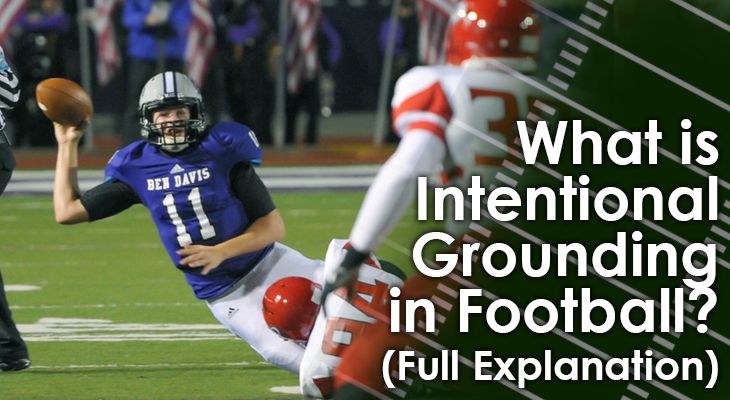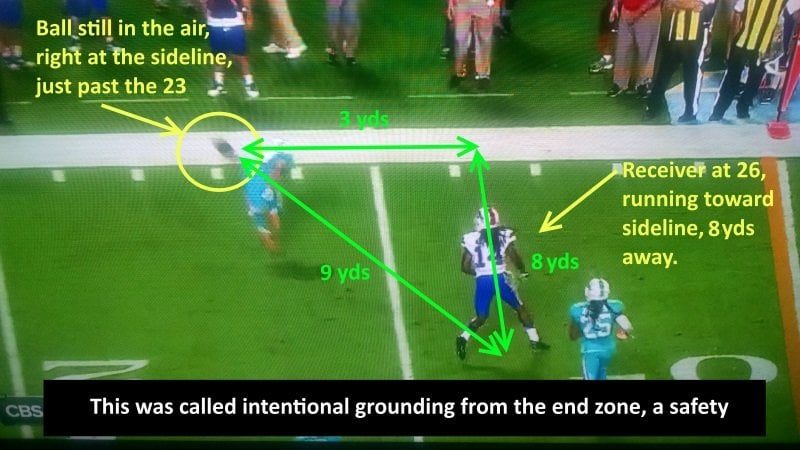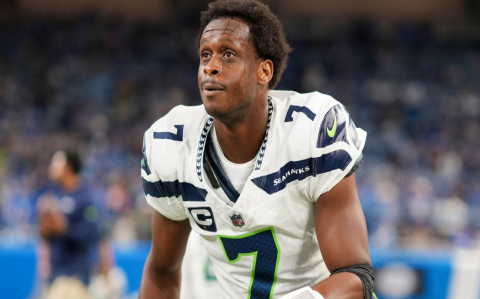Alright, so you’re wondering what happens when a quarterback decides to get rid of that football in a way that just don’t look right, huh? Well, that there’s what they call “intentional grounding.” And trust me, the refs don’t take kindly to it. If you’re watching football and see a QB throw the ball to the ground with nobody around, there’s usually a price to pay.
So, what is intentional grounding, really? Let me put it simply: it’s when the quarterback is under pressure, stuck in the middle of the field, and decides to just toss that ball where no teammate can catch it. Now, he might do this trying to avoid a sack, thinking he’s being clever. But the refs? Oh, they see it a bit differently. They call it “intentional grounding” because he’s just throwing that ball to avoid losing yards.

Now, there are some rules to this here penalty. For one, it only counts if the quarterback’s still inside what they call the “tackle box.” That’s basically an invisible area between the linemen who stand on either side of him. If he steps outside that box, he’s got a little more freedom to throw the ball away as long as it crosses the line of scrimmage. But if he’s in that box and doesn’t get it near anyone, well, there’s trouble coming his way.
What exactly is the penalty, then?
Alright, let’s talk punishment. In the NFL, if they catch the quarterback doing intentional grounding, they hit the team with a loss of down and push them back 10 yards. That’s a big deal! Losing 10 yards can make a whole difference between scoring and not. And that loss of down? Oh, that’s just icing on the cake – you don’t get to try that play again. Nope, that down is gone, and you move on to the next one.
Now in college football, they do it a tad different. There, they don’t move ‘em back 10 yards. Instead, they place the ball right where the QB threw it, and you lose that down just the same. So if he throws it five yards behind where he started, well, that’s where they’ll put the ball down. You can see how it’s just as bad for the team, losing yards and down alike.
Why do they even have this rule? Well, it’s to keep things fair. The league don’t want QBs tossing that ball away just because they’re about to be tackled. They want the game to stay tough, make the QB make smart choices, not easy ones. So, when he’s about to get sacked, they want him to either scramble, pass to a teammate, or take the sack. But if he tries throwing the ball away just to get out of that tight spot, well, that’s breaking the rules.
When is it NOT intentional grounding?

Now, there’s some situations where it don’t count as grounding even if he throws the ball away. First off, like I said, if he runs outside the tackle box – that invisible space between the linemen – he’s in the clear to throw it away, as long as it crosses the line of scrimmage.
And then there’s the “spike” play. You’ve probably seen it: QB gets the snap, steps back, and throws the ball right to the ground as soon as the play starts. Now you’d think that’s grounding, right? Nope! That’s a strategy move to stop the clock. It’s legal because he’s not under pressure when he does it. He’s just trying to stop the time without losing his place on the field. It’s a smart play, and they allow it.
Then there’s rare moments where the defense rushes so fast, they mess with the play itself. Say a defensive lineman jumps over and pressures him right when he’s about to spike it, that’s a different situation. Sometimes refs get mixed up, but usually they won’t call grounding if he’s clearly under pressure and doing what he can to avoid a sack.
How does it affect the team?
Well, like I said, that penalty’s a killer. You lose down and yardage, which is bad news for any offense. It messes with the momentum too. You’re going forward, and suddenly, you’ve got to take steps back. And with the down loss, it means you’re one step closer to giving the ball to the other team. Ain’t no team wants that.
Coaches don’t like it, fans don’t like it, and players sure don’t like it either. QBs get trained to avoid intentional grounding for a reason – it’s a last-ditch move, something they only do when they’re really in a pickle and don’t see another way out. A smart quarterback will look for options, move around, find a teammate, or even take the sack if he has to.

Conclusion
Intentional grounding might sound like a smart move in the moment, but it sure costs more than it helps. The penalty’s there to keep things fair and make the QB play with some strategy, not just throw the ball away and expect no consequences. Losing those yards and downs can change the whole game. So, now you know – when you see that QB in trouble, he better think twice before just chucking that ball to the ground!
Tags:[Football, Intentional Grounding, Penalty, NFL, College Football]

























